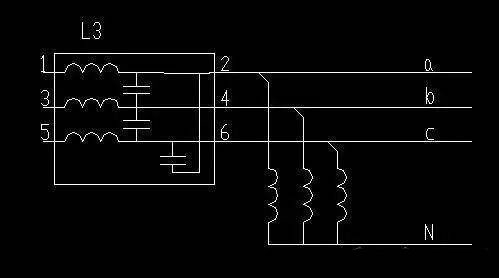How to Solve Three Phase Unbalance?
Three-phase unbalance refers to the inconsistency of the three-phase current (or voltage) amplitudes in the power system, and the amplitude difference exceeds the specified range. Due to the unbalanced load added by each phase power supply, it belongs to the fundamental wave load configuration problem. The occurrence of three-phase unbalance is related to the user's load characteristics, as well as the planning and load distribution of the power system. This article will introduce the method to solve the three-phase unbalance.
Reasonable Distribution of Three-phase Load
On the distribution of three-phase load, electric power workers should collect and record relevant data carefully in actual work, and predict the state of electricity load to a certain extent. Secondly, the distribution of the three-phase balance can be better distributed by installing a balancing device. In some low-voltage three-phase four-wire transmission lines, reactive power compensation devices can be added to solve various consequences caused by the unbalanced current phenomenon in the power grid that often occurs. Such a device can not only compensate the reactive power of the system, but also adjust the unbalanced active current. In addition, according to the different conditions of the load moment in the actual situation, the appropriate adjustment of the wiring method will also help to distribute the three-phase load.
Treatment of Unbalanced Current in Three-phase Load
According to the compensation principle of unbalanced current and susceptance, at any time, as long as there are three-phase ungrounded unbalanced loads, each of them can be connected in parallel with a resistor and capacitor. Therefore, under the guidance of the unbalanced current management susceptance compensation theory, the equivalent analysis of different properties can be used to determine the amount of reactive power compensation between phases and relative to ground. When the distribution transformer needs to compensate the unbalanced current, the following principles should be satisfied.
- There are two contents to the current management, one is to compensate the power factor, the other is to adjust the three-phase current imbalance, which together determine the reactive power required for compensation.
- In actual engineering construction, a full-capacity governance method should be adopted, which should be distinguished from inductance compensation to avoid serious overcompensation.
- It should be considered that the load will change with time. Based on this characteristic, the compensation amount should also be adjusted appropriately according to the change of the load.
- The switching times of the device switch and compensation equipment are limited, and the optimization scheme of the whole day should be strategically managed during the design.
In a word, when setting the proportional adjustment factor, it is necessary to consider both the constraints of the power factor and the constraints of overcompensation.
Detection of Three-phase Load
It is also necessary to check the three-phase load regularly. After the reasonable allocation and control of the three-phase compliance, the relevant departments should set up inspection work. The balance of electricity is not absolute, it can only be achieved relative balance as far as possible. In the actual testing work, each department should take the balance measurement index formulated by the state and relevant departments as a standard, and professionally record and analyze the testing results. Periodically detect the load current of each phase, so as to discover the unbalanced three-phase condition in time.

